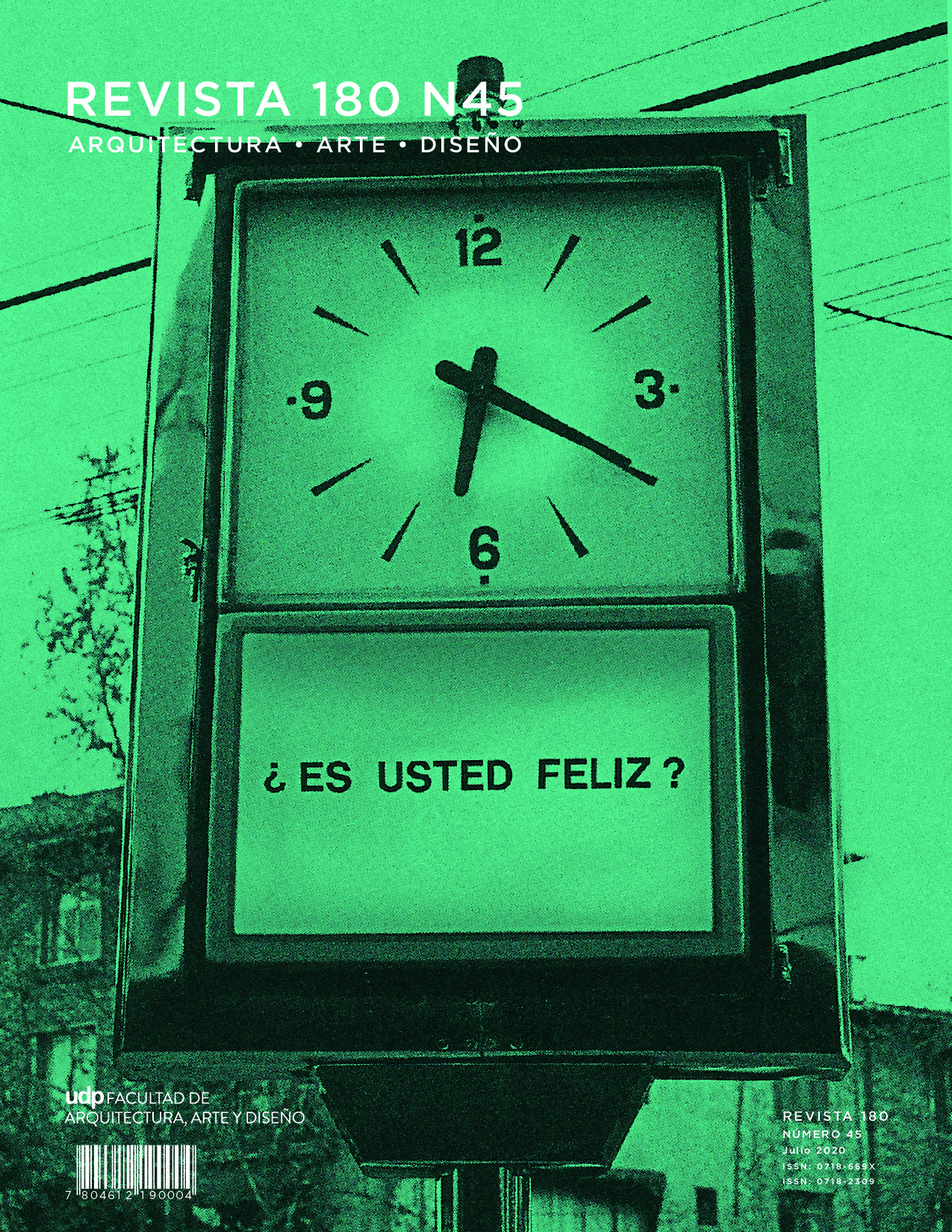Articles
LOCUS SUSPECTUS: THE UNCANNY IN THE ARCHITECTURE OF ALFREDO JAAR
Figura 3. Paraíso o sobre una comunidad feliz. Fotograma video The Skoghall Konsthall. Alfredo Jaar. 2000. (Español (España))
Figura 4. Purgatorio o sobre la revelación de algo desconocido. Fotograma video The Skoghall Konsthall. Alfredo Jaar. 2000. (Español (España))
Figura 5. Infierno o sobre la ausencia inevitable. Fotograma video The Skoghall Konsthall. Alfredo Jaar. 2000. (Español (España))
Figura 2. Lights in the City Alfredo Jaar, Montreal, 1999. Fuente: Ligniti, E. (2005). (Español (España))
Figura 1. Estudios sobre la felicidad Alfredo Jaar, Santiago, 1979-1981. Fuente: Ligniti, E. (2005). (Español (España))
Published 2020-07-27
Keywords
- Alfredo Jaar,
- art-architecture,
- the uncanny
How to Cite
Barría Chateau, H. A. (2020). LOCUS SUSPECTUS: THE UNCANNY IN THE ARCHITECTURE OF ALFREDO JAAR. Revista 180, (45). https://doi.org/10.32995/rev180.Num-45.(2020).art-642
Abstract
One of the definitions of “the uncanny” (das unheimliche) provided by Freud is locus suspectus: a "strange" and "familiar" place at the same time, to be or to inhabit. In addition, Trías argued that the uncanny is the "condition and limit" of beauty, but precisely because it is presented to us with a familiar face. From this term, this article reviews a series of essays on the scope of the uncanny in art and architecture, to frame the work within public interventions of the architect Alfredo Jaar. A work that through the freedom that grants art to architecture, it reaches an intermediate state of poetic, political, and ethical and aesthetic connotations. Specifically, this work analyses and interprets The Skoghall Konsthall (2000), a pavilion of wood and paper built in a small community in Sweden, whose purpose was to expose the emptiness of our existence, if there were no art in our lives. With this, and while Jaar distinguishes the character of both arts, we could point out that, through the uncanny, his public interventions reach an architectural antipoetry: a practice that in times of theoretical-formal pluralism and ideological crisis of the discipline, achieves a dislocation of the established order to propose new ways of seeing and thinking about the world.
Figura 3. Paraíso o sobre una comunidad feliz. Fotograma video The Skoghall Konsthall. Alfredo Jaar. 2000. (Español (España))
Figura 4. Purgatorio o sobre la revelación de algo desconocido. Fotograma video The Skoghall Konsthall. Alfredo Jaar. 2000. (Español (España))
Figura 5. Infierno o sobre la ausencia inevitable. Fotograma video The Skoghall Konsthall. Alfredo Jaar. 2000. (Español (España))
Figura 2. Lights in the City Alfredo Jaar, Montreal, 1999. Fuente: Ligniti, E. (2005). (Español (España))
Figura 1. Estudios sobre la felicidad Alfredo Jaar, Santiago, 1979-1981. Fuente: Ligniti, E. (2005). (Español (España))
